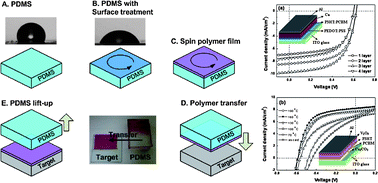Fabrication of multilayer organic solar cells through a stamping technique†
Abstract
In this article, we demonstrate a simple and reliable stamping technique for fabricating multi-layer solar cells. A poly(di-methylsilane) (PDMS) stamp is used for transferring the active layers onto the substrate. An intermediate


 Please wait while we load your content...
Please wait while we load your content...